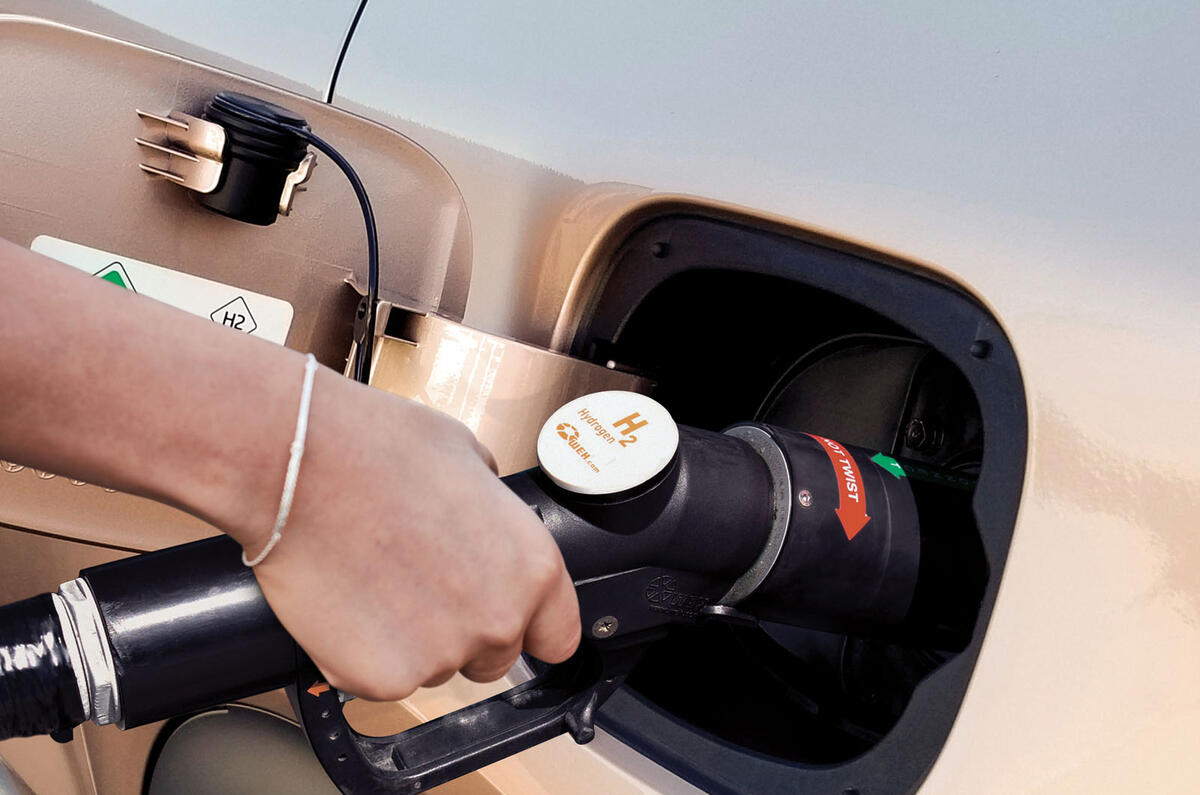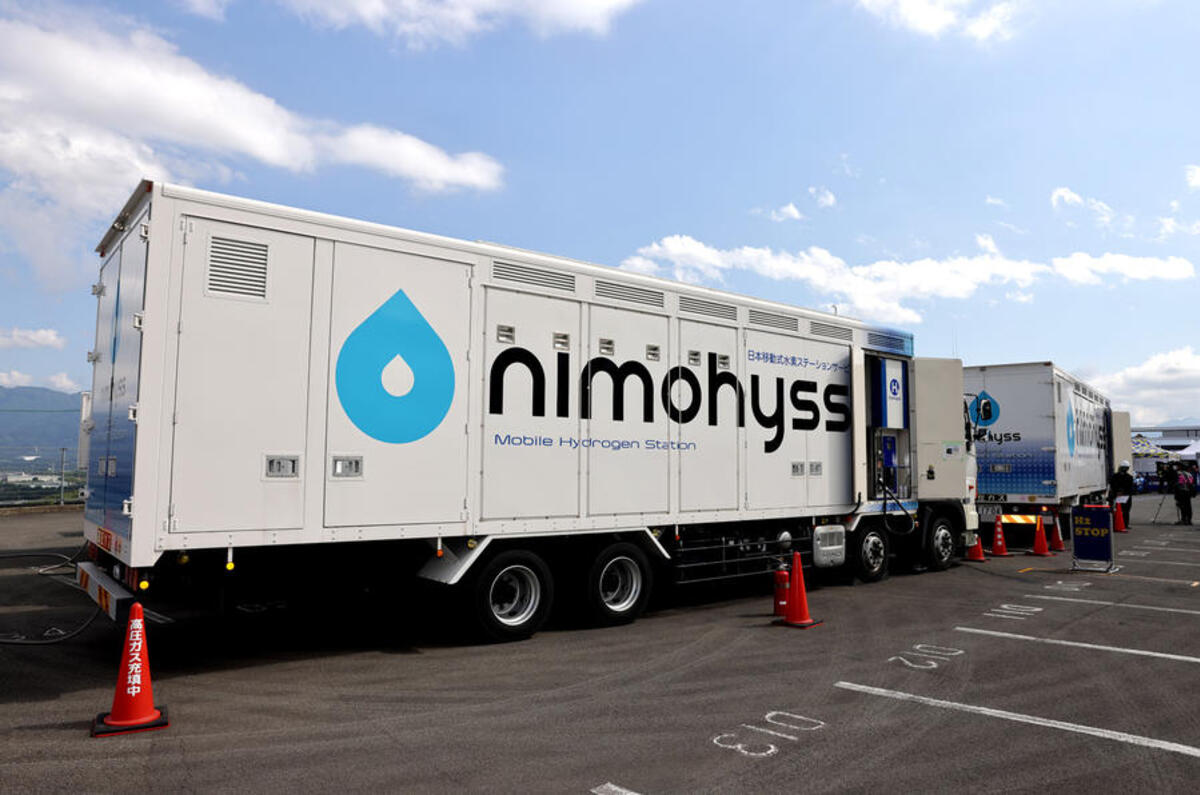This week, 13 months after the European Commission published a hydrogen strategy report to the European Parliament, the European Council and others, the British government announced the UK’s “first-ever Hydrogen Strategy”.
A hydrogen economy isn’t a new idea and it’s been under consideration in Europe for the past two decades. Hydrogen isn’t just about fuel cell electric cars either – far from it. The idea of a hydrogen economy is to use the gas across the board, for industry and domestic, for heating, for energy storage, to power shipping, aircraft, light and heavy commercial vehicles and railway locomotives, both indirectly with hydrogen fuel cells and directly by combusting it in piston engines or gas turbines.
But is the government’s enthusiastically worded announcement all it seems? Its focus is jobs, investment, money and more than a smattering of revolution. “The start of the UK’s hydrogen revolution”, in fact. But there’s the merest sense of back pedalling in the announcement, too. Hydrogen only ‘could be’ critical to meet our net zero emissions by 2050 and only has the ‘potential’ to transform the way we power our lives. Call me old-fashioned but that lacks the kind of reassurance I’m looking for as we teeter on the brink of climate apocalypse.
Still, a UK hydrogen strategy ‘could’ be worth £900 million and create 9000 jobs by 2030. It ‘could’ also cut carbon emissions by 78% by 2035, which seems a tad optimistic but marvellous if it happens. However, the strategy will take a ‘twin-track’ approach of including both ‘green’ and ‘blue’ hydrogen in the mix. And this is where things get a bit sticky.
The National Grid, which in its 2020 Future Energy Scenarios report makes it clear that hydrogen is essential, points out that 8.7 trillion Watt-hours of electricty from wind power went unused in the last decade for want of a storage medium. Making green hydrogen using surplus sustainable electricity plays to one of hydrogen’s main strengths – that of energy storage.
Blue hydrogen, on the other hand, is made by steam reforming natural gas, which means splitting it into hydrogen and CO2 using steam at high temperature, then ‘sequestrating’ (carbon capture) the CO2 by pumping it into holes in the ground. Carbon capture on that scale has never been tried and to be successful would need to be 100% secure with no leakage until hell freezes over.
Blue hydrogen contains contaminants too, so it’s not suitable for fuel cells without further cleansing. And there are more questions. A report published in August 2021 called How Green is Blue Hydrogen?, by Robert Howarth and Mark Z Jacobson, professors at Cornell and Stanford universities respectively, clearly sets out why blue hydrogen is anything but. The report holds that the greenhouse gas footprint of blue hydrogen (including ‘fugitive’ methane) is 20% higher than burning natural gas and 60% higher than burning diesel for heating.
The worry is that the emphasis of the UK hydrogen strategy may end up focusing too much on the economics of producing blue hydrogen that consumes more natural gas than simply burning it, and not enough investment in the green hydrogen the world needs. To get a hydrogen infrastructure up and running quickly, using the easiest (if dirty) method to get hydrogen into the mix isn’t necessarily a bad thing in the short term, but let’s hope that the financial benefit to the natural gas industry doesn’t get in the way of saving the planet.
READ MORE
Government unveils plans to spark UK hydrogen economy
Under the skin: How hydrogen could fuel the future of plant machinery









Join the debate
Add your comment
The flaw in the argument is that it assumes all that electrolysis plant just sitting idle most of the time, just waiting for those occasional peaks of generation! Will achieve greater efficiency re generation........ at the expense of dreadful plant capital utilisation.
And it assumes such electrolysis close to generation - otherwise you rely on grid capacity and back to square one! (May as well then use the power in the electricity grid. ) So then you are left with the issues around transportation of the hydrogen to place of use. May as well just upgrade the grid.....
Surprised to see that gas is worse for heating homes than diesel in terms of greenhouse gas footprint. Storage of short-term surplus wind / solar generated energy is a real issue. Our wind turbine averages 60-70 kWh per day generation, peaking at 200 on the windiest days, but troughing at v low figures on the calmest days. To capture all of it in batteries would be prohibitively expensive so most gets "lost" to the grid just when there is surplus elsewhere
We should consider the overall energy requiements and carbon footprint of the two types of EV, hydrogen and battery, both from the mining of the resources needed for them, from their manufacture, from their use and from their recycling. There is also the concern of what these modes require in terms of resources and minerals from around the world.
We should also consider the demands these two modes place on our electrical infrastructure.
These are areas that I believe hydrogen holds the trump card and where hydrogen can be a more sustainable and versatile product in the long term.
I keep hearing throwaway comments about how batteries keep getting better and cheaper but does the evidence really support this? There have been reductions in the costs of batteries over the last decade but, to me, this appears to be slowing and there is nothing to say that there will not be price increases and spikes in future.
I also hear about the recyclability of batteries - is this really happening?